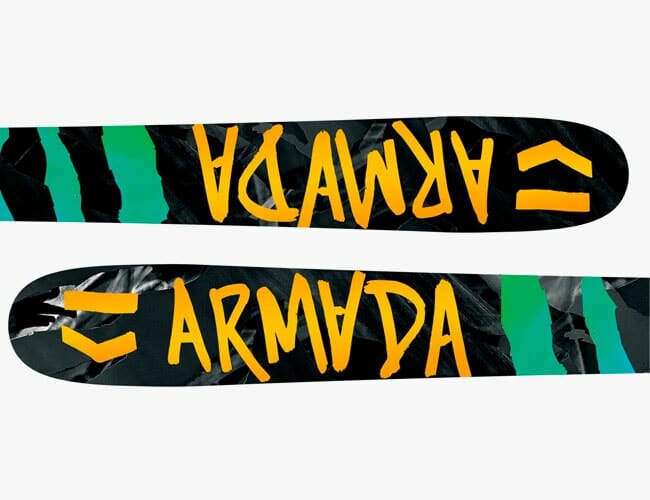I’ve said it before: skiing is an expensive sport. Absurdly so. Tickets at some resorts now cost as much as $180 for a single day of lift access (and don’t get me started on the extortionate price of french fries). The gear is expensive too, and unlike an activity such as hiking, where you can get away with wearing the jeans that you sport around town on a day-to-day basis, skiing requires highly technical equipment that you may not use for any other activity. For many, that’s reason enough to stick to the rental shop. But you should buy your own gear. And if you’re just beginning to put together your kit, start with the boots: they are the single most important piece of ski gear that you can own.
Ski boots form the bridge between the flesh of the body and the metal and wood of the ski. They used to be leather, but ever since Bob Lange began experimenting with ABS (acrylonitrile butadiene styrene) in the late fifties and early sixties, ski boots have been constructed with molded plastic. As connectors, boots allow for the unhindered transfer of power from the leg to the ski. Fit is of the utmost importance to this power transfer; without a good fit — and by good I mean close, tight, cramped, maybe even painful — you’ll never get the most out of your legs, or your skis. (And you’ll probably hate the sport, too.)
Without a good fit — and by good I mean close, tight, cramped, maybe even painful — you’ll never get the most out of your legs, or your skis.
You’ll never get a perfect fit from a rental boot. Period. Rental boots, by design, are intended to accommodate feet of all shapes and sizes. They’re designed to be comfortable. They’ll work fine for those who take to the mountains casually and infrequently, but for anyone looking to progress at skiing and to push his abilities, rental boots suck. A good fit is individualized, and that simply cannot be achieved with a boot designed for the many — you wouldn’t rent a pair of running shoes, would you? Plus, rental boots stink.
If you take this advice to heart, then your only option is to buy. And if you live in the 21st Century, then you’ll likely turn to the Internet for some advice on that. This isn’t a bad idea; the web is inhabited by more than a few intelligent skiers plying gear advice through well-researched buying guides, but beware: “The Best Ski Boots of 2000-Whatever” should be used as a starting point only. As a writer of similar buying guides I can tell you with full honesty that quality and performance take you only to a certain point before personal preference and specific needs take over. When a ski boot makes a publication’s “Best of” list, it does signify that it’s probably a great boot, but that doesn’t mean it’s right for you — those skiers/writers know their stuff, but they don’t have the same feet as you.
But who do you turn to when the Internet can’t be relied upon? If only there were a person with expert knowledge about boots and feet, conveniently located where ski equipment is sold! Enter the bootfitter. A good bootfitter is like a barber and a mechanic — the best can also stand in for most therapists — wrapped up into one individual. They know ski boots inside and out (literally) and can tailor the right one to an individual’s specific foot and skiing style.
Eight out of ten times the source of the skier’s problems was that the boot was too big, often by about two sizes.
I witnessed the work of an expert bootfitter during two winters spent working at a ski shop at the base of Jackson Hole. Almost on a daily basis, skiers would enter the shop complaining of cramped or pained feet, and our bootfitter would sit them on the bench for an examination. These types of interactions always started with a conversation: “Where do you normally ski, what type of skiing do you like to do, how often do you ski…” and so on. Then the boots would come off and the liners peeled from the shells. The bootfitter would perform a shell fit — the skier places his bare foot into the plastic ski boot shell with toes just touching the front of the boot and the fitter measures the leftover space in the heel by fingers, as with a properly-poured glass of whiskey. Eight out of ten times the source of the skier’s problems was that the boot was too big, often by about two sizes. (My ski boots are a full size and a half below my everyday shoe size.)
These skiers had inevitably purchased their boots online or visited a sub-par fitter working far from the slopes. Yes, the best of the best work right at the base of the mountain — that way a customer can ski a few runs in a new pair of boots, and if problems persist, he can return to the shop for additional custom work, always free of charge. Bootfitters can punch and stretch and grind the plastic shells of ski boots to create extra room for irregularities in the foot in order to create the best possible fit. Online retailers can’t do that.
It took our shop’s bootfitter roughly an hour to analyze a customer’s feet and stance, and to size him up in multiple pairs of boots from different brands to find just the right one. Most opted for heat-molded custom footbeds and liners. There were always laughs and sometimes tears. Good customers got to undergo the process with a beer in hand. It was, without a doubt, very expensive. But almost every skier who bought a new pair of boots there left the shop happy, with a strong notion that the experience — and the cost — were worth it. I know this because our bootfitter always made good tips.
We reviewed and tested countless pairs of skis to compile this list of ten skis worth your hard-earned coin. Read the Story





